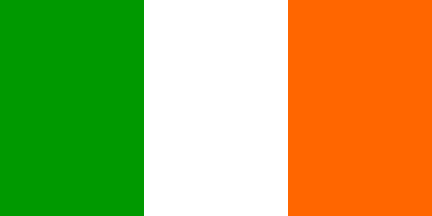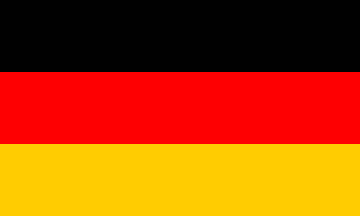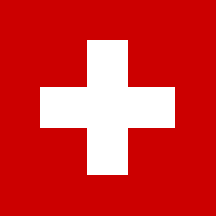62½% Irish  25% German
25% German  12½% Swiss
12½% Swiss 
Gen 1940 Gen 1910 Gen 1880 Gen 1850 Gen 1820
|
|
|
|
|
William and Bridget O'Malley Stanton |
 |
|
|
|
|
|
Thomas and Mary Carroll Carroll |
 |
Y DNA below |
|
|
|
|
|
|
John and Catherine Condon Higgins |
 |
|
|
|
|
|
|
|
Unknown Starke |
 |
|
|
|
|
|
Unknown Kenny |
 |
|
|
|
|
|
|
Unknown Hartigan |
 |
Analysis of the Tree
Generations. My tree has five generations: my wife and I, our 4 parents, our 8 grandparents,
our 16 great grandparents, and our 32 great great grandparents. That's a total of 62
individuals in 31 families. This is generally as far back as my research goes. Information for
some Irish great great grandparents is incomplete. And, information is available for some
German “three-greats” who are excluded in this analysis.
Birth Years. The five generations, starting with the great greats, were born roughly every 30
years. I call them Gen 1820, Gen 1850, Gen 1880, Gen 1910, and Gen 1940. The actual
average birth years are: 1818, 1845, 1878, 1909, and 1940.
Countries of Origin. The 32 great great grandparents from the 1820 generation were all born
in Europe: 20 were Irish, 8 were German, and 4 were Swiss (German-speaking). Our
children, therefore, are 5/8ths Irish, 1/4th German, and 1/8th Swiss. Ireland was actually ruled
by England. Germany was separate Kingdoms of Prussia, Bavaria, and Württemberg, and the
Electorate of Mainz (later added to the Grand Duchy of Baden).
Surnames. There are 16 Irish surnames: Biggins/Beggan, Carroll (2), Condon, Flannery, Foy,
Hartigan, Higgins, Kenny, McDonald, McNally, Murray, O'Malley, Stanton, Walsh, Young.
There are 8 German surnames: Berles, Drüeke, Fassnacht, Green, Heller, Koch, Schickell,
Schmitt. There are 3 Swiss surnames: Alleman, Starke, Wittenmeier. That's 27 out of 32
surnames. There are 5 great great grandmothers whose birth surnames we don't know: 4
Irish and 1 Swiss.
Homes in Europe. Thus far, only three specific homes have been found in Europe where our
ancestors lived. The first is the Foy farm in the townland of Derreennascooba in County
Mayo, Ireland. The second is the Beggan farm in the townland of Drumgill in County Cavan,
Ireland. The third is the Druecke house in Ostentrop, North Rhine-Westphalia, Germany. All
three were found as a result of travel to the places.
Immigration to America. There were no American restrictions on European immigrants when
members of the family tree immigrated. The first ancestors arrived in America in the early
1830s. The last arrived in 1880. (There was no Statue of Liberty until 1886.). There were 28
immigrants out of the 62 individuals on the family tree. They are in Gen 1850 and Gen 1820,
except one Carroll, who is in Gen 1880. They left Europe from the ports of Antwerp, Bremen,
Hamburg, LeHavre, and Liverpool. These were the major European ports of departure in the
nineteenth century. They came on sailing ships before 1870 and steamships thereafter. Most
arrived at the port of New York (Castle Garden after 1855). Some arrived in Baltimore.
The earliest immigrants left from Bremen in 1834. They were the Schickells from the Kingdom
of Bavaria. Their family of six first had to travel 235 miles by horse and wagon to the port. At
20 miles per day, that would take 12 days. They sold the horse and took the wagon with them
to America. They left from Bremen on the sailing ship Johannes and arrived in Baltimore two
months later. After 80 days in Baltimore, they traveled by horse and wagon 420 miles to Tiffin,
Ohio, stopping for 14 days in Pittsburgh.
The last immigrants left from Cobh in 1880. They were were the Carroll family of Ballyneety,
County Limerick. Their family of nine left from Queenstown, County Cork on the steamship
Parthia. (In 1912, the Titanic left Queenstown on it fatal voyage. In 1920, the town name was
changed to Cobh.) They arrived in Castle Garden. The voyage took two weeks. They went on
to Chicago, probably by train.
The steamship Parthia was four times as long as the sailing ship Johannes. The Parthia took
two weeks to cross the Atlantic. The Johannes took two months.
Homes in America. The families made homes primarily in three general areas: Chicago,
Illinois; Grand Rapids, Michigan; and Green County, Wisconsin. Some initially lived a few
years in seven areas the eastern United States: Tiffin, Ohio; Baltimore, Maryland; Harlem,
Albany, White Hall, and Nunda, New York; and somewhere in Vermont. One settled initially in
Ontario, Canada. The earlier generations lived on farms or in cities. The later generations
lived in suburbs.
Family Histories. It has been possible to write histories for 26 of the 31 families. The 5
unwritten families are in Gen 1820.
Life Expectancy. The lifespan for 27 males ranged from 41 to 88 years. The mean of 67.8
compares with the 74.2 for Americans in 2020. The lifespan for 26 females ranged from 27 to
91 years. The mean of 70.2 compares with 79.9 for Americans in 2020. My maternal
grandmother Rose Smith Drueke was 91 when she died. Her mother Christine Koch Smith
was 27.
Family Size. The families in the five generations had 1 to 10 children, with a mean of 4.6.
There is no apparent trend. If Gen 1970 were included, its family size would be 2 or 3.
Religion. All the families in the five generations are Roman Catholic. One couple married
after their first child was born. Another couple separated late in life , but were buried next to
each other.
Occupation. The breadwinners in the five generations had a variety occupations: builder,
carpenter, consultant, farmer, gold miner, grocer, harness maker, laborer, wholesale liquor
dealer, locksmith, manufacturer, musician, policeman, railway mail clerk, ropemaker.
salesman, saloon keeper, slater, and undertaker. One ancestor went to the California Gold
Rush in 1849. One was a sergeant the Civil War. One had two brothers who were regimental
band leaders in the Civil War. One worked on the transcontinental railroad and was present at
the Golden Spike Ceremony in 1869. One was a lieutenant in WWII.
Education. The first known high school graduates were in Gen 1880. The first college
graduates were in Gen 1910. The first post graduates were in Gen 1940.
Deep Ancestry. Y-chromosome DNA testing has identified the deep ancestry of four of the 16
great great grandfathers: Biggins/Beggan from Ulster in Ireland has the DNA of The Three
Collas who emigrated to Ulster from England in the 4th century. McDonald from Ireland has
the DNA of Cenel Moain who lived in Ulster in the 7th century. Carroll from County Limerick in
Ireland has the DNA of Breassal Breac who lived in Ossory in the 2nd century. Drueke from
Old Saxony in Germany has Saxon DNA found in England.
All four go back to one common ancestor who was born with a mutation called R-L151 in Ukraine. This common ancestor later split into Saxon and Celtic
mutations. The Saxon mutation is called R-U106 and occurred in Poland.
Drueke has the Saxon mutation. The Celtic mutation is called R-P312 and occurred in Southern Germany. Biggins, McDonald, and Carroll have the Celtic mutation.
Biggins and McDonald share a later mutation called R-L21 that occurred in Southern England.
Y Chromosome DNA Testers and Results
Biggins Y-Chromosome DNA
DNA test results for Peter show that his closest Y-chromosome DNA matches are testers named Biggins, Bigham, Beggan, Beagan, and Little. The Irish word for little is beag. They share a mutation named BY3164, which is roughly estimated to have occurred in the 14th century in central Ulster. These and certain testers named McGuire, Boylan, McAuley, McDonald, and Connolly share a mutation named S953, which is roughly estimated to have occurred in 500 AD in a man named Carthend who lived on the River Faughan in far north Ulster. These and certain testers named McMahon, Hughes, Duffy, Monaghan, McQuillan, McKenna, and MacDougall share a mutation named Z3008, which is roughly estimated to have occurred in 450 AD in England. It was the Y-DNA of The Three Collas, Roman-trained warriors who emigrated from England to Ulster. Only males have Y-DNA, and it goes back father to father to father. See also The Story of My Y.
|
|
Drueke Y-Chromosome DNA
DNA test results for Peter's cousin Paul Drueke show that he matches up fairly closely with people whose ancestors are from England (Arnold, Bennett, Lowder, Ozment, Scott, Self, Wooten), Wales (Ellis, Price), Scotland (Armstrong, Russell), and Ireland (Moore). Many people with English names have Germanic origins. The term Anglo-Saxon is used by some historians to designate the Germanic tribes who invaded and settled the south and east of Britain from the early 5th century up to the Norman conquest in 1066. The Druekes are from Westphalia, which was part of Old Saxony. Paul's most recent shared mutation is named BY3323, which is roughly estimated to have occurred in 400 BC.
|
|
Carroll Y-Chromosome DNA
DNA test results for Michael Patrick Carroll, second cousin of Marilyn, once removed, show that his closest matches are Carrolls. They share a mutation named FT79210, which is roughly estimated to have occurred in 1050 AD. They share an earlier mutation with a broader group named Y5058, which is roughly estimated to have occurred in 100 AD. This broader group of testers includes men named Ryan, O'Dwyer, Gorman, and Kennedy. These families descend from Breassal Breac who lived in Leinster. They settled in the 13th or 14th century in County Tipperary and County Limerick. See Breassal Breac DNA.
|
|
McDonald Y-Chromosome DNA
DNA test results for Michael McDonnel, Marilyn's third cousin, once removed, show that his closest matches are named McGee and Patton. They share a mutation named BY216377, which is roughly estimated to have occurred in 1150 AD. They, in turn, share a mutation named FT120288 with testers named Tierney. This mutation is roughly estimated to have occurred in 950 AD. Michael's DNA is associated with a group called Cenel Moain, a subset of Cenel Eoghain, a subset of Northwest Irish (M222).
|
|
Y Chromosome DNA Tree
| Tester |
FTDNA kit |
Most Recent Mutation Group |
Historical Mutation |
Most Recent Mutation in Common |
|---|
Drüeke/Drueke, Paul,
first cousin of Peter |
230496 |
R-BY3323, 400 BC
Old Saxony |
|
R-Z381, 2650 BC
Old Saxony |
Saxon, R-U106, 2950 BC
Poland |
R-L151, 3000 BC
Ukraine |
| Beggan/Biggins, Peter |
127469 |
R-BY3164, 1400 AD
Ulster |
The Three Collas, R-Z3008, 450 AD
Colchester or Wales in England |
R-L21, 2600 BC
Southern England |
Celtic, R-P312, 2850 BC
Southern Germany |
McDonald/McDonnel, Michael,
third cousin of Marilyn |
252843 |
R-BY216377, 1150 AD
Ulster |
Cenel Moain, R-FGC23592, 650 AD
Ulster |
Carroll, Michael Patrick,
second cousin of Marilyn |
198624 |
R-FT79210, 1050 AD
Limerick |
Breassal Breac, R-Y5058, 100 AD
Ossory |
R-DF27, 2600 BC
Pyrenees |
Earlier DNA and Branches
| Ancestors of R-L151 |
Real Rough Year |
General Area |
People Branching Off from Ancestors of R-L151 |
|---|
| R-M173 |
20000 BC |
Eastern Kazakhstan |
Viking |
| R-M207 |
26000 BC |
Southern Siberia |
Siberian |
| K-M526 |
42000 BC |
Bangladesh |
Chinese, Korean, Southeast Asian |
| IJK-L15 |
44000 BC |
Southern Iran |
Jewish, Arab, Persian, Kurd, Lebanese, Turk |
| GHIJK-F1329 |
46000 BC |
Southern Iran |
Romani, Khmer |
| CF-P143 |
62000 BC |
Northern Ethiopia |
African, Southern and Eastern European, Native American, Siberian, Japanese, Australian Aborigine |
| A-V221 |
120000 BC |
Sudan |
African |
|
 Tree of Family Histories
Tree of Family Histories